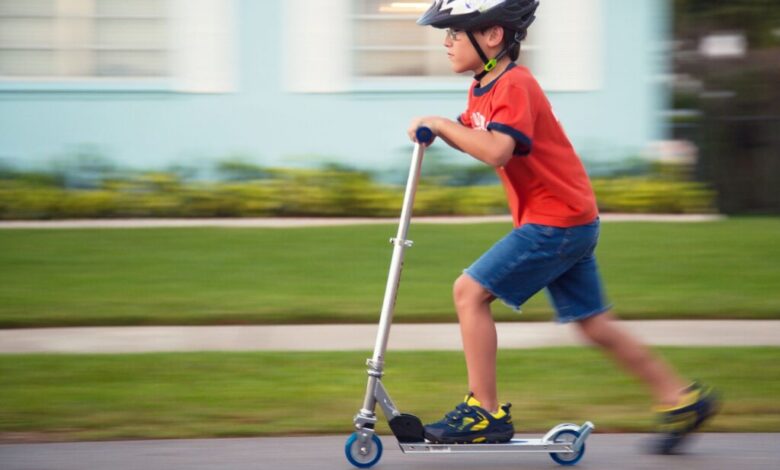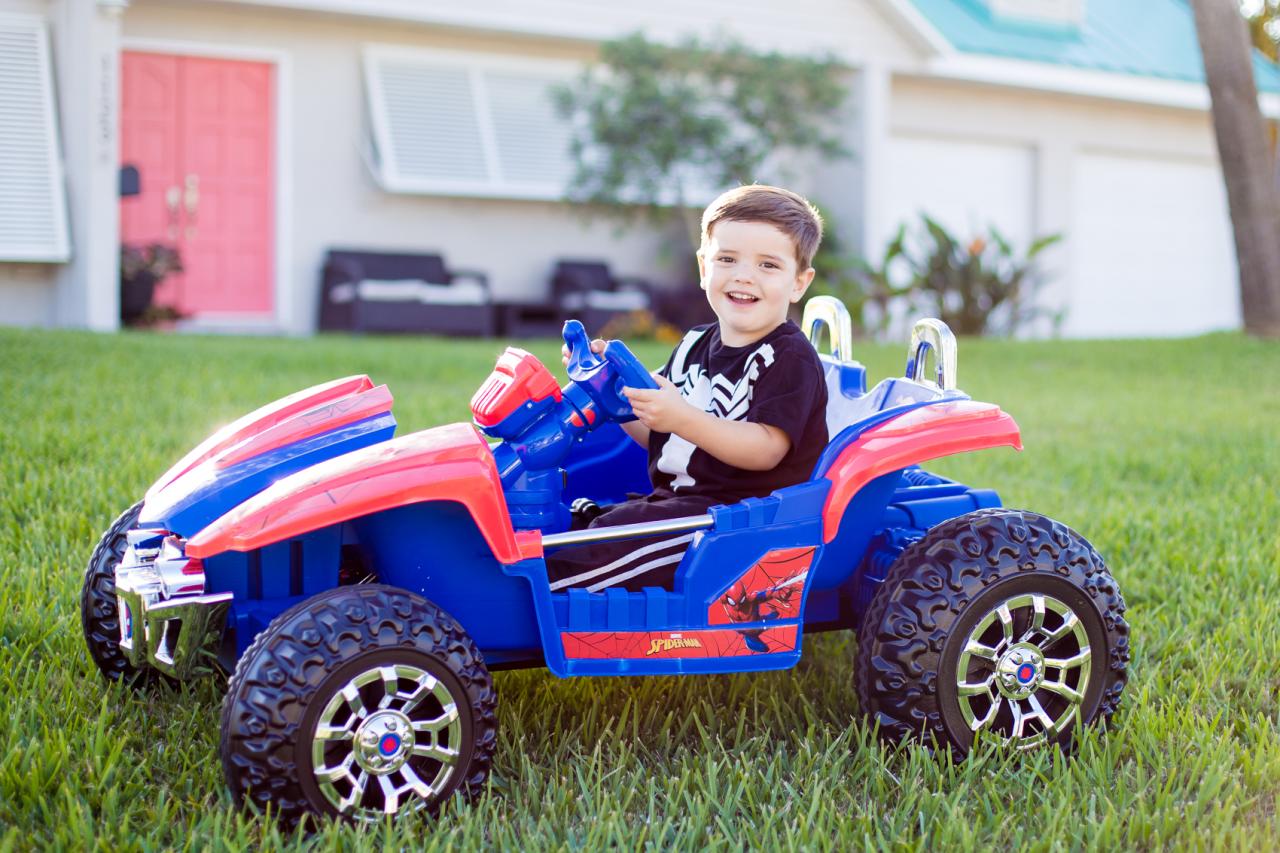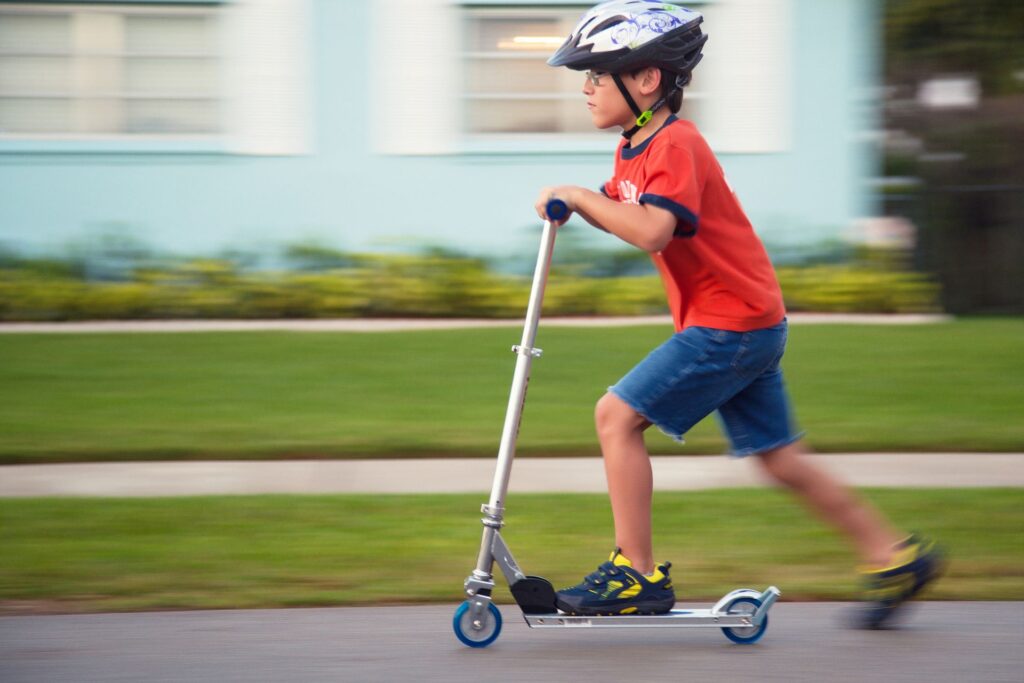
Best toys to get kids outside – sparking adventure and development. Outdoor play is crucial for a child’s well-rounded growth, and the right toys can make all the difference. From infants to school-aged children, there’s a world of engaging activities waiting to be discovered. This guide explores the best toys to encourage outdoor exploration, physical activity, and imaginative play, ensuring your little ones are enjoying the great outdoors.
Outdoor play isn’t just about fun; it’s about fostering physical health, cognitive development, social skills, and emotional well-being. A well-chosen toy can spark curiosity and exploration, encouraging children to interact with their surroundings and each other. This article will guide you through selecting appropriate toys for various age groups, considering factors like safety, durability, and your child’s interests.
Introduction to Outdoor Play Toys
Outdoor play is crucial for a child’s healthy development. It’s more than just fun; it’s essential for fostering physical, cognitive, social, and emotional growth. Children need the space and freedom to explore, experiment, and interact with their environment, all of which are greatly facilitated by appropriate outdoor toys. The right toys can encourage everything from vigorous physical activity to imaginative role-playing, contributing significantly to a child’s overall well-being.Outdoor play allows children to engage in a variety of activities that promote different skills and aspects of their development.
This active engagement with the world around them helps them develop a sense of self, their understanding of the physical world, and their ability to interact with others. This fundamental aspect of childhood development is greatly supported by a wide array of outdoor play toys.
Importance of Outdoor Play Activities
Outdoor play offers a unique opportunity for children to develop a range of skills. From gross motor skills to problem-solving, and from building social connections to emotional regulation, outdoor play is fundamental. Outdoor play environments provide an ideal setting for children to actively explore, discover, and interact with their surroundings.
Different Types of Outdoor Play Activities
Children engage in a wide variety of activities during outdoor play. These activities can range from simple exploration to organized games, and each contributes to their development. Active play, such as running, jumping, and climbing, helps children develop their physical coordination and strength. Imaginative play, such as role-playing or building structures, encourages creativity and problem-solving. Social play, such as playing games with friends or participating in team sports, helps children develop their social skills and learn to cooperate.
Examples of Toys Promoting Physical Activity, Creativity, and Social Interaction
Outdoor toys play a key role in facilitating various types of play. For instance, balls, bikes, and scooters encourage physical activity, promoting gross motor skills and coordination. Building blocks, nature exploration kits, and outdoor playsets foster creativity, allowing children to engage in imaginative play and explore their environment. Sports equipment, playhouses, and team-based games encourage social interaction and cooperation.
These toys, designed for different types of play, are instrumental in nurturing children’s overall development.
Summary of Key Benefits of Outdoor Play
| Benefit | Explanation | Example Toys |
|---|---|---|
| Physical Health | Outdoor play promotes physical development by encouraging movement, coordination, and strength. | Balls, bikes, scooters, climbing frames |
| Cognitive Development | Outdoor play encourages problem-solving, exploration, and creativity through hands-on activities and interaction with the environment. | Building blocks, nature exploration kits, puzzles |
| Social Skills | Outdoor play fosters interaction, communication, and teamwork through group activities, games, and shared experiences. | Sports equipment, playhouses, team games, sandpits |
| Emotional Well-being | Outdoor play reduces stress and anxiety by providing a stimulating and engaging environment that promotes relaxation and enjoyment. | Outdoor playsets, imagination toys, swings, seesaws |
Types of Outdoor Toys for Different Age Groups
Outdoor play is crucial for a child’s development, fostering physical activity, creativity, and social skills. Choosing the right toys for different age groups is essential to ensure both enjoyment and safety. The following sections detail the specific features and considerations for selecting outdoor toys appropriate for infants, toddlers, preschoolers, and school-aged children.Outdoor toys are more than just fun; they are learning tools that aid in a child’s development.
Selecting the right toys for each stage ensures that the child is engaged, stimulated, and growing appropriately. The materials, features, and types of toys all play a significant role in fostering growth.
Outdoor Toys for Infants
Infants need toys that stimulate their senses and encourage early development. Soft toys with contrasting colors and textures are ideal for engaging their visual and tactile senses. Push-pull toys that encourage movement and exploration are also important for this age group. These toys must be designed with safety in mind. Materials should be non-toxic and easily grasped by small hands.
Durable construction is crucial to withstand the inevitable tugging and pulling of an active infant.
- Soft toys with contrasting colors and textures stimulate visual and tactile senses. Examples include plush animals, textured balls, and rattles with various shapes and sizes.
- Push-pull toys encourage movement and exploration. Examples include colorful, lightweight push-pull toys with textured handles.
- Safety is paramount. Toys should be made of non-toxic, child-safe materials and have no small parts that could be a choking hazard.
- Durable construction is vital. Toys should withstand the inevitable tugging and pulling of an active infant.
Outdoor Toys for Toddlers, Best toys to get kids outside
Toddlers are becoming more mobile and active, requiring toys that encourage physical development and imaginative play. Outdoor playsets with various elements, such as tunnels, slides, and climbing structures, are excellent for fostering gross motor skills and imaginative play. Balls are also crucial for developing hand-eye coordination and throwing/catching skills. Safety is paramount. The playsets must have sturdy construction to withstand the vigorous play of toddlers.
Child-proof design is essential to prevent injuries.
- Outdoor playsets with tunnels, slides, and climbing structures encourage gross motor skills and imaginative play.
- Balls promote hand-eye coordination and throwing/catching skills.
- Sturdy construction is essential for withstanding the vigorous play of toddlers.
- Child-proof design prevents injuries from sharp edges or loose parts.
Outdoor Toys for Preschoolers
Preschoolers are eager to engage in more complex activities and imaginative play. Tricycles, ride-on toys, and playhouses provide opportunities for building, imaginative play, and group activities. The materials used should be safe and non-toxic, while the construction should be robust enough to handle the demands of active play. Easy assembly and disassembly are also beneficial for ease of storage and use.
- Tricycles, ride-on toys, and playhouses foster building, imaginative play, and group activities.
- Safe and non-toxic materials are essential.
- Robust construction ensures the toys can handle active play.
- Easy assembly and disassembly are beneficial for storage and use.
Outdoor Toys for School-Aged Children
School-aged children are ready for more complex and challenging activities. Sports equipment like balls, bats, and rackets are essential for team sports and individual games. Bikes, roller skates, and scooters offer opportunities for exploration and outdoor adventures. Safety gear such as helmets and protective pads are crucial to minimize injuries. Supervision is vital to ensure responsible use and safe practices.
Finding the perfect toys to get kids outside is crucial for their development. Outdoor play fosters creativity and helps them burn off energy. While we’re on the topic of health, did you know that some blood pressure medications might surprisingly aid in diabetes treatment? Learning more about this connection could be helpful for families. Check out this insightful article on blood pressure drug help diabetes treatment for more details.
Regardless, a good set of outdoor toys will encourage a love for nature and active play, which are essential for kids’ well-being.
- Sports equipment, bikes, and roller skates promote team sports, individual games, and exploration.
- Safety gear, such as helmets and protective pads, is essential.
- Supervision is vital for safe and responsible use.
- Durable construction is important for withstanding the demands of active play.
Categorization of Outdoor Toys by Age Group
Factors to Consider When Choosing Outdoor Toys
Choosing the right outdoor toys for your child is crucial for fostering their physical and cognitive development, and ensuring their safety and enjoyment. Careful consideration of various factors, including age appropriateness, safety standards, material quality, and environmental factors, leads to a more fulfilling and safe outdoor play experience.Selecting toys that align with a child’s developmental stage and interests promotes their engagement and learning.
Prioritizing safety and durability ensures the toys can withstand the rigors of outdoor play while minimizing potential hazards.
Age-Appropriateness and Safety Standards
Children develop at different paces, and toys should be designed to accommodate their evolving skills and abilities. Age-appropriate toys challenge children without overwhelming them, fostering a sense of accomplishment and encouraging exploration. Always check the age recommendations on the packaging, and consider the child’s physical capabilities and cognitive development. Safety standards, such as those set by ASTM International, play a vital role in ensuring toys are designed to minimize risks of injury.
Thoroughly examining the toy’s construction, potential hazards, and compliance with safety standards is crucial.
Durability and Material Quality
Durable toys are essential for outdoor play, as they withstand the elements and the rigors of active children. Consider the materials used in the toy’s construction. Wood, plastic, metal, and fabric each have different strengths and weaknesses in terms of weather resistance and durability. Choose materials that are resistant to weathering, such as UV-resistant plastics or weather-proofed fabrics.
Robust construction and sturdy joints are vital for long-lasting play.
Children’s Interests and Preferences
Children are naturally drawn to toys that spark their imagination and enthusiasm. Consider your child’s interests and hobbies when selecting outdoor toys. If they love animals, a playhouse with animal figurines would be a great choice. A child who enjoys sports might be excited about a set of outdoor games like a basketball hoop or a swing set.
Understanding their preferences ensures engagement and enjoyment, leading to increased play time.
Safety Precautions and Guidelines
Ensuring safety is paramount when choosing outdoor toys. Regularly inspect toys for any signs of wear or damage, replacing them if necessary. Ensure that toys are appropriate for the child’s age and size. Remove any small parts that could pose a choking hazard. Supervise children closely while they are playing with outdoor toys, especially those involving climbing or other physical activities.
Keep a close watch on the surroundings and make sure the playing area is safe and free from obstacles.
Environmental Considerations
Choosing toys that are environmentally friendly is an important consideration. Look for toys made from recycled or sustainable materials. Consider the potential impact of the toy on the local ecosystem. For instance, if the child is playing in a natural environment, consider toys that do not contribute to litter or harm the surrounding ecosystem. Eco-friendly materials and sustainable manufacturing practices are increasingly important for conscious consumers.
Comparing Materials Used in Outdoor Toys
Different materials have unique characteristics that make them suitable for various outdoor toys. Wood, for example, offers a natural and often durable option, but can be susceptible to moisture damage. Plastic is often lightweight and affordable, but may not be as durable in harsh weather conditions. Metal toys, like those for climbing frames, provide a robust and long-lasting option, but can be heavy and require careful handling.
Fabric materials, such as those used in tents or playhouses, offer versatility but require regular maintenance to prevent deterioration. A table displaying the pros and cons of various materials can help in making informed decisions.
Encouraging outdoor play is key, and the right toys can make all the difference. For example, a set of sturdy building blocks or a wagon are fantastic for imaginative play in the great outdoors. Knowing how to prep fresh vegetables, like learning how to cut beets , can be a fun way to introduce kids to the joys of cooking and eating healthy.
These activities often lead to longer stretches of outdoor time and more opportunities for fresh air and fun.
| Material | Pros | Cons |
|---|---|---|
| Wood | Natural, durable, aesthetically pleasing | Susceptible to moisture damage, heavy |
| Plastic | Lightweight, affordable, resistant to some weather | May not be as durable in extreme weather, potentially less aesthetically pleasing |
| Metal | Robust, long-lasting, often used in climbing structures | Heavy, requires careful handling |
| Fabric | Versatile, can be used for tents and playhouses | Requires regular maintenance to prevent deterioration, may not be as durable as other materials |
Creative Outdoor Play Ideas: Best Toys To Get Kids Outside
Unleashing a child’s imagination in the great outdoors is a powerful way to foster creativity and learning. Outdoor play provides opportunities for children to explore, experiment, and discover the world around them. Encouraging creative play in nature allows children to develop essential skills like problem-solving, critical thinking, and emotional regulation, while also nurturing a lifelong appreciation for the natural world.Beyond simple games, outdoor play can become a canvas for imaginative adventures.
By providing the right tools and fostering a supportive environment, parents and educators can guide children toward engaging, enriching experiences that spark their creativity and curiosity.
Imaginative Play Scenarios with Toys
These scenarios aim to showcase how various toys can spark imaginative play and exploration. Using familiar items in new ways can ignite a child’s creativity and encourage independent thinking.
- Fort Building Extravaganza: Using blankets, pillows, chairs, and even large cardboard boxes, children can transform a simple backyard corner into a castle, a spaceship, or a secret hideaway. Adding stuffed animals or dolls to the fort setting can further enhance the imaginary world, encouraging role-playing and storytelling. This activity encourages teamwork, problem-solving, and collaboration if multiple children participate.
Encouraging outdoor play is key, and fun toys are the best way to do it. A great way to get kids outside is with a set of building blocks or a vibrant set of balls. Meanwhile, advancements in medicine, like the work being done by the company developing a pill to replace injected drugs, like this company working on a pill that would replace injected drugs , are amazing! Ultimately, keeping kids active and engaged with the world around them, whether it’s with toys or other exciting activities, is a must.
- Nature Detectives: Equipped with binoculars, magnifying glasses, nature journals, and field guides, children embark on a nature exploration journey. They can document their findings, record observations, and even create a nature-themed story or presentation. This activity cultivates a deep connection with nature, fostering curiosity and appreciation for the natural world. This approach can also help them learn about local flora and fauna.
- Outdoor Art Gallery: Provide children with various natural materials like leaves, twigs, flowers, and stones. Encourage them to create their own outdoor art pieces, painting rocks, arranging flower crowns, or designing nature collages. This activity allows children to express their creativity and develop their artistic skills in a unique and dynamic environment.
- Mud Kitchen Adventures: A designated mud kitchen area with containers, spoons, and other utensils can become a fantastic hub for imaginative play. Children can pretend to bake mud pies, make mud cakes, or even create mud sculptures. This activity promotes sensory exploration and encourages experimentation with various textures and materials. Ensure supervision is provided and the area is safe to avoid potential hazards.
Adapting Toys for Unique Activities
A child’s imagination is a powerful force. Simple toys can transform into something more meaningful when combined with a bit of creativity.
- Recycled Treasure Hunt: Collect empty cardboard boxes, plastic bottles, and other recycled materials. Children can use these items to create elaborate obstacle courses, build elaborate structures, or design costumes. This activity promotes resourcefulness, environmental awareness, and a sense of accomplishment.
- Costume Creations: Use old clothes, fabrics, and even natural materials like leaves and twigs to create unique costumes. Children can act out their favorite stories or characters, creating their own plays and adventures. This activity allows for role-playing, creativity, and the development of imaginative storytelling.
- Themed Play Areas: Transform different outdoor areas into specific play zones. A designated “construction zone” with blocks, buckets, and tools can inspire children to build forts, bridges, or other structures. A “water play area” with sprinklers and containers can spark imaginative play, fostering sensory experiences.
Encouraging Creativity and Imagination
Creating a supportive environment is key to nurturing a child’s creativity. Let them explore, experiment, and make mistakes without judgment. Praise their efforts and encourage them to think outside the box.
Theme: Nature Explorers
Toys: Binoculars, magnifying glasses, nature journals, field guides, bug catchers
Safety and Maintenance Tips for Outdoor Toys

Keeping kids safe and happy while they play outdoors is paramount. Proper maintenance of outdoor toys plays a vital role in ensuring their longevity and safety. This section Artikels essential safety precautions and maintenance strategies to maximize enjoyment and minimize risks.Regular inspections and appropriate maintenance prevent accidents and injuries, ensuring the toys remain functional and safe for extended use.
Following these guidelines helps ensure the outdoor play environment is not only fun but also a secure space for children to develop and explore.
Essential Safety Precautions
Safety should always be a top priority when children are using outdoor toys. Implementing safety precautions minimizes the risk of injuries and accidents. These precautions include ensuring proper supervision, selecting age-appropriate toys, and adhering to manufacturer instructions.
- Supervision is Crucial: Constant supervision, especially for younger children, is essential when they are playing with outdoor toys. Active monitoring allows adults to intervene if a hazardous situation arises, preventing potential injuries. For example, a child playing on a swing set needs adult supervision to ensure they use the equipment safely and avoid falls or other hazards.
- Age-Appropriate Toys: Choosing toys suitable for the child’s age and developmental stage is crucial. Toys designed for younger children may not be suitable for older ones and vice versa, and this can lead to improper use and potential injuries. A younger child might not have the coordination to safely use a complex climbing frame, and an older child might get bored with a simple sandbox.
- Adhere to Instructions: Always follow the manufacturer’s instructions and safety guidelines provided with the toy. These guidelines often detail specific usage instructions, weight limits, and potential hazards, ensuring safe operation and minimizing risks.
Regular Maintenance and Repair
Regular maintenance of outdoor toys ensures their longevity and safety. This includes checking for damage, wear and tear, and functionality. Prompt repair of any issues can prevent accidents and extend the life of the toys.
- Thorough Inspections: Regularly inspect the toy for any signs of damage, such as broken parts, loose screws, or frayed materials. This proactive approach can prevent minor issues from escalating into more serious problems.
- Addressing Damage: Promptly address any identified damage or wear and tear. Small repairs, like tightening loose screws or replacing worn-out parts, can significantly extend the toy’s lifespan and safety. Ignoring these problems can lead to more significant and costly issues.
- Professional Help: For more complex repairs or if you are unsure about a repair, seek professional help from a qualified technician. A professional repair ensures the toy is repaired safely and effectively.
Inspection and Cleaning Guidelines
Regular inspection and cleaning of outdoor toys are essential to maintain their functionality and safety. This includes checking for rust, debris, and other potential hazards.
- Visual Inspection: Regularly inspect the toy for any signs of rust, corrosion, or damage to the metal parts. Rust can weaken metal components, increasing the risk of breakage and potential injuries.
- Cleaning Procedures: Clean the toy with appropriate cleaning agents and water, ensuring you follow the manufacturer’s instructions. Avoid using harsh chemicals that could damage the material or create a safety hazard. This includes regular washing of fabric toys and other items exposed to the elements.
- Removing Debris: Remove any debris, dirt, or leaves that may accumulate on the toy. This helps maintain the toy’s functionality and prevents the growth of mold or mildew.
Preventing Accidents and Injuries
Proper use and maintenance of outdoor toys are critical in preventing accidents and injuries. This involves creating a safe play environment and educating children on safe play practices.
- Safe Play Areas: Ensure the play area is free of hazards like uneven surfaces, sharp objects, or potential trip hazards. Creating a well-defined and safe play area can drastically reduce the risk of accidents.
- Child Education: Teach children safe play practices, such as how to use the equipment correctly and the importance of following safety guidelines. Proper instruction helps them understand and avoid potential hazards.
- Secure Play Areas: Secure play areas with appropriate fencing or barriers to prevent access to unsafe locations and discourage unsupervised activities. This includes protecting areas with moving parts from unauthorized access.
Regular Toy Inspection Checklist
This checklist helps ensure the safety and longevity of outdoor toys.
| Item | Inspection Point |
|---|---|
| Metal Parts | Check for rust, cracks, or loose screws |
| Wood Parts | Check for splinters, cracks, or rot |
| Fabric/Plastic Parts | Check for tears, holes, or fraying |
| Moving Parts | Ensure proper function and secure operation |
| Hardware | Ensure all screws, bolts, and fasteners are tight |
| Overall Condition | Look for any signs of wear and tear |
Budget-Friendly Outdoor Play Options
Budgeting for outdoor play doesn’t mean sacrificing fun! There are numerous cost-effective options and creative ways to transform ordinary items into exciting outdoor play experiences for kids. This approach fosters resourcefulness, creativity, and a deeper appreciation for play.Transforming your backyard into a vibrant play area doesn’t need to break the bank. Many readily available materials can be repurposed or combined to create engaging and imaginative outdoor play spaces.
This often involves a little ingenuity and a lot of kid-powered fun.
Cost-Effective Outdoor Play Equipment
Repurposing items and using affordable materials are key to creating a fun and stimulating outdoor play space without spending a fortune. Consider using items you already have around the house or neighborhood.
- Recycled Plastic Bottles: Empty plastic bottles can be transformed into colorful, simple, and exciting play items. Cut them in half and paint them, then use them as stepping stones or as part of a target practice game. Or, paint them and use them as colorful markers for hopscotch.
- Old Tires: These can be painted, decorated, and used to create obstacle courses, small slides, or even a makeshift fort base. Use them to create rolling obstacles or a climbing frame for kids.
- Wooden Pallets: Wooden pallets can be used to build unique structures, forts, or even a simple climbing wall. Consider creating a unique playhouse or even a small garden structure.
DIY Outdoor Play Areas
Creating a play area doesn’t always require purchasing expensive equipment. A bit of creativity and a resourceful spirit can go a long way.
- Nature Play Areas: Encourage children to explore nature by creating designated areas with natural elements like rocks, sticks, and leaves. Build a small natural fort, a nature-themed obstacle course, or a sensory path using found objects. This encourages children to interact with their environment.
- Fort Building: Blankets, sheets, chairs, and even cardboard boxes can be used to create imaginative forts. Encourage children to use their imagination and design elaborate and colorful forts that can be easily modified. Encourage storytelling and role-playing within the forts.
- Obstacle Courses: Use existing landscape features like trees, rocks, and hills to design a simple obstacle course. Create a safe, fun, and challenging course for kids of varying ages and skill levels.
Repurposing Materials for Outdoor Play
Turning waste into treasure can be a fun and educational activity for kids. It also saves money and reduces waste.
- Cardboard Boxes: Cardboard boxes can be painted, decorated, and transformed into houses, cars, or other imaginative play structures. Encourage children to decorate the boxes and use them as part of a larger play area.
- Old Furniture: Old furniture, like rocking chairs or tables, can be used as parts of a play area, such as a fort, a reading nook, or a creative play zone. Consider how to creatively integrate old furniture to maximize its use.
- Plastic Bottles: Empty plastic bottles can be used to create a variety of play items. They can be painted, decorated, and used for storage, as part of a water play station, or as a creative craft project.
Outcome Summary

In conclusion, fostering a love for the outdoors in children is a rewarding experience. By carefully selecting age-appropriate toys and prioritizing safety, you can create opportunities for your children to thrive. This guide has provided a starting point for exploring the diverse world of outdoor play. Remember to consider your child’s individual preferences and interests, and create a stimulating environment that encourages exploration, creativity, and a lifelong connection with nature.




